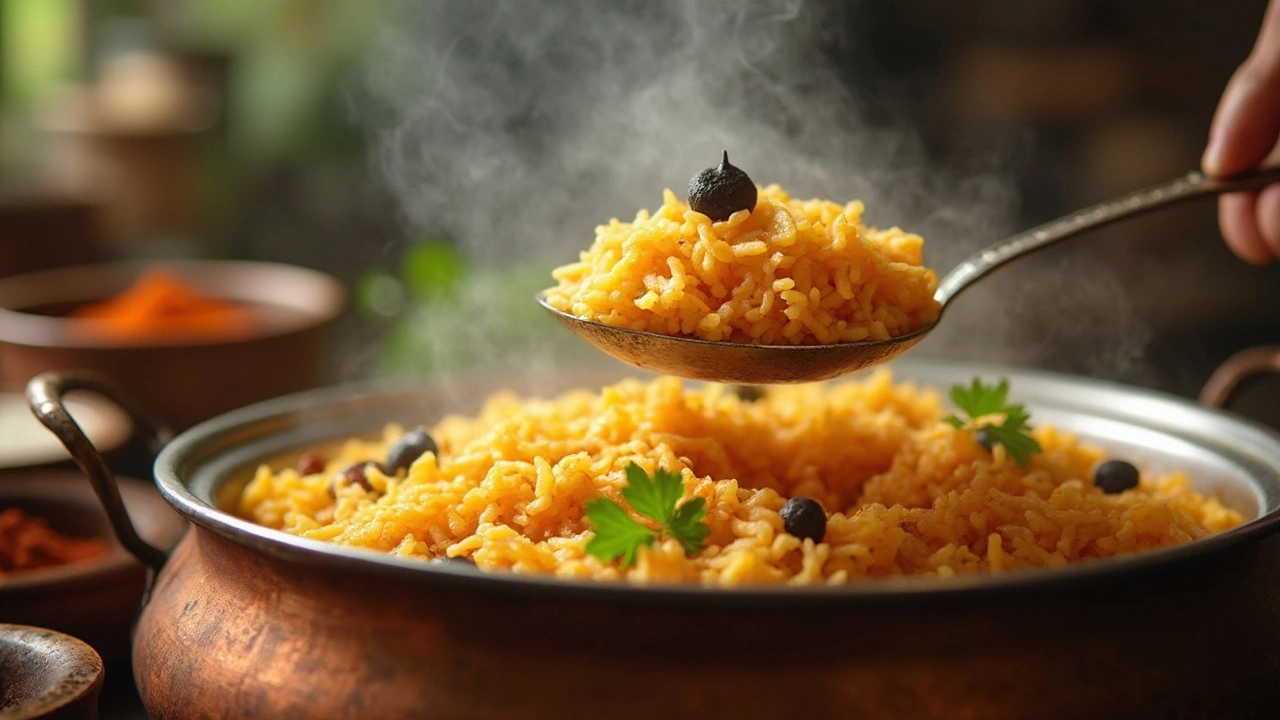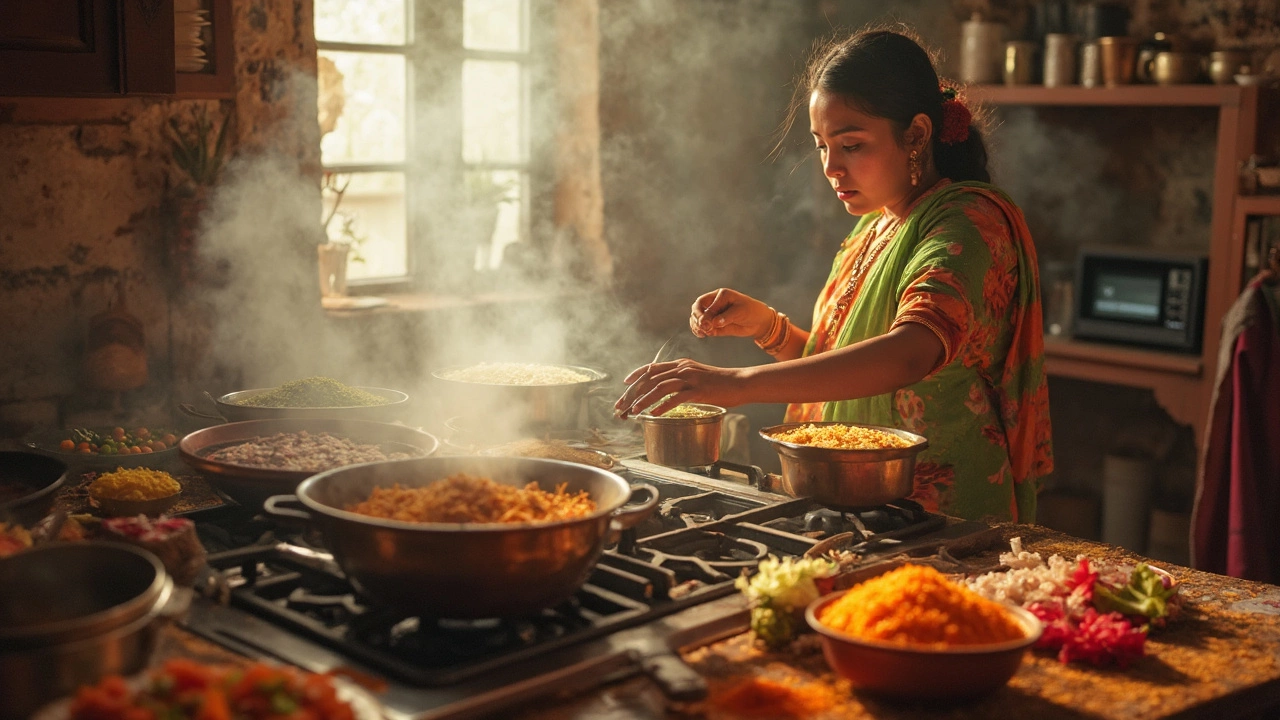Rice and Biryani Recipes – Master the Art of Fragrant Rice Dishes
When you explore Rice and Biryani Recipes, a collection of dishes that showcase rice as the star, flavored with Indian spices and cooking techniques, you instantly step into a world where every grain tells a story. One of the most celebrated dishes in this realm is Biryani, a layered rice‑and‑meat or vegetable preparation known for its aromatic complexity. Biryani hinges on a blend of key ingredients: the fragrant Basmati rice, long‑grain rice prized for its distinct aroma and fluffy texture, the heat‑balancing Garam Masala, a spice mix that can be homemade or store‑bought, bringing warmth and depth, and whole spices, whole cloves, cardamom pods, cinnamon sticks and bay leaves that release hidden bursts of flavor during cooking. Understanding how these parts fit together lets you move from a basic pot of rice to a celebratory feast.
The biggest reason many home cooks label biryani as difficult is the need to balance three moving parts: rice texture, moisture level, and layered flavors. If the rice is overcooked, it turns mushy; if it’s undercooked, it stays hard. The same moisture that makes the rice fluffy also has to carry the scent of spices without turning soggy. That’s why the technique of “par‑boiling” the rice for a few minutes before the final steam bake is a game‑changer. It creates a buffer that lets the grains finish cooking evenly while soaking up the aromatic steam. Another common hurdle is timing the spice infusion; adding whole spices too early can burn them, while adding them too late leaves the dish bland. The rule of thumb is to bloom the whole spices in hot oil right after the onions turn golden, then layer the rice on top and seal the pot.
Key Techniques for Perfect Biryani
Layering isn’t just about aesthetics – it’s a science. The bottom layer of rice locks in the juices from the meat or vegetables, while the top layer creates a dry crust that intensifies aroma. This dry‑top method is why many chefs finish a biryani with a quick “dum” (sealed‑pot) on low heat, allowing the steam to circulate. Adding a thin drizzle of saffron‑infused milk or rose water before sealing adds a nuanced floral note that lifts the whole dish. For those chasing juiciness, marinating the protein in yogurt, ginger‑garlic paste, and a pinch of garam masala overnight creates a tender, flavorful base that releases moisture during cooking. Finally, a quick rest of 10‑15 minutes after the pot is opened lets the flavors settle and the steam finish any lingering cooking, delivering that coveted melt‑in‑your‑mouth texture.
Below you’ll find a curated set of articles that break down each of these elements in detail. From the real role of garam masala in biryani to the mystery behind that tiny black speck you sometimes spot, each post tackles a specific question and offers actionable tips. Whether you’re after a foolproof way to make biryani more flavorful, a guide to achieving juicy texture, or a quick fix for common mistakes, the collection equips you with practical knowledge. Dive in and start turning your kitchen into a biryani‑making lab that rivals any restaurant.
Is Garam Masala Used in Biryani? Spices, Flavor & Real Talk
Ever wondered if garam masala belongs in biryani? Find out how this famous spice blend fits into traditional and modern biryani cooking. We’ll break down its role, how it affects flavor, and why some cooks swear by it while others skip it. Get practical tips for using garam masala and learn the difference between homemade blends and store-bought ones. If you’re after authentic flavor or just want your biryani to taste amazing, this guide covers it all.
Read moreSmall Black Thing in Biryani: What It Is and Why It Matters
Ever stared at that mysterious small black thing in your biryani and wondered if you should eat it or toss it aside? This article uncovers exactly what that black object is, why it's there, and how it affects the taste and aroma of biryani. You’ll learn to tell whole spices apart, get tips on using them, and avoid common mistakes that mess with flavor. Discover why biting into one may surprise your taste buds and what to do if you don’t like these intense spice moments. After reading, you'll know your biryani down to the last detail.
Read moreHow to Make Biryani More Flavorful: Simple Tricks for Maximum Taste
Struggling to get that restaurant-style biryani flavor at home? This article shares proven tips that make a real difference, from smart layering to the right kind of rice. You’ll find easy hacks to boost aroma and taste without extra fuss. We’re talking about small changes with big results, not complicated kitchen science. Learn how the right preparation and timing take your biryani game to the next level.
Read moreWhy Is Biryani Difficult to Make? Breaking Down the Challenges
Ever wondered why making biryani at home feels like running a marathon in the kitchen? This article unpacks the real reasons behind biryani’s reputation for being tricky—from the nitpicky rice to those layered flavors. With honest facts and hands-on tips, you’ll see exactly what trips people up and how to dodge common mistakes. Get ready to understand biryani’s secrets so your next attempt won’t end in panic. Every point is easy to follow and actually useful for any home cook.
Read moreHow to Make Juicy Biryani: Secrets to the Perfect Texture
Creating a juicy biryani involves the perfect balance of moisture and flavor. This guide covers essential tips, from selecting the right rice to using marination techniques that enhance juiciness. Learn how to achieve the right rice texture, balance spices, and the role of cooking techniques. Boost your biryani-making skills with practical advice to impress your family and guests.
Read more



